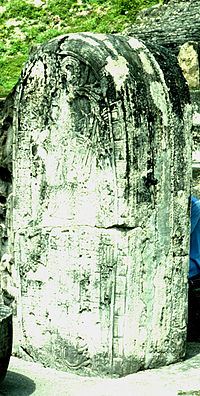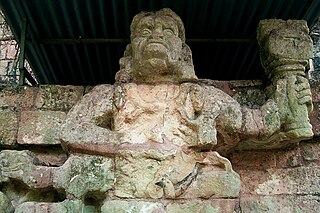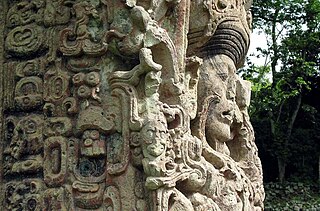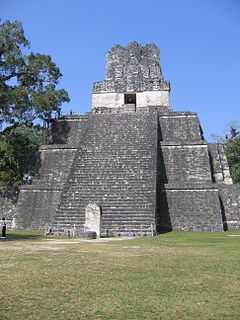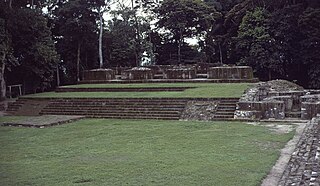| Jasaw Chan K'awiil II | |
|---|---|
| Ajaw of Tikal | |
Stela 11 representing Jasaw Chan K'awiil II. | |
| Reign | c.869 |
| Predecessor | Jewel K'awiil |
| Successor | none |
| Born | before 869 |
| Died | after 869 |
| Religion | Maya religion |
Jasaw Chan K'awiil II [N 1] also known as Stela 11 Ruler, (fl. 869), was an ajaw of the Maya city of Tikal. He ruled c.869. The monuments associated with Jasaw Chan K'awiil II are: Stela 11 and Altar 11. [1] [2]
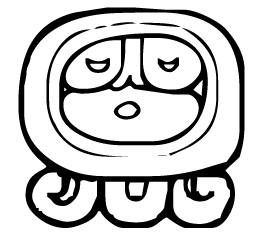
Ajaw or Ahau ('Lord') is a pre-Columbian Maya political title attested from epigraphic inscriptions. It is also the name of the 20th day of the tzolkʼin, the Maya divinatory calendar, on which a king's kʼatun-ending rituals would fall.

The Maya civilization was a Mesoamerican civilization developed by the Maya peoples, and noted for its logosyllabic script—the most sophisticated and highly developed writing system in pre-Columbian Americas—as well as for its art, architecture, mathematics, calendar, and astronomical system. The Maya civilization developed in an area that encompasses southeastern Mexico, all of Guatemala and Belize, and the western portions of Honduras and El Salvador. This region consists of the northern lowlands encompassing the Yucatán Peninsula, and the highlands of the Sierra Madre, running from the Mexican state of Chiapas, across southern Guatemala and onwards into El Salvador, and the southern lowlands of the Pacific littoral plain.

Tikal is the ruin of an ancient city, which was likely to have been called Yax Mutal, found in a rainforest in Guatemala. It is one of the largest archaeological sites and urban centers of the pre-Columbian Maya civilization. It is located in the archaeological region of the Petén Basin in what is now northern Guatemala. Situated in the department of El Petén, the site is part of Guatemala's Tikal National Park and in 1979 it was declared a UNESCO World Heritage Site.
Contents

Reigning at a time when Tikal had already declined as a regional and political power, Jasaw Chan K'awiil is Tikal's last-known ruler identifiable from extant inscriptions. [1] His only known monument is a stela and its accompanying altar, with an inscription bearing the latest date of any yet recovered and deciphered in Tikal. Labelled as Stela 11, the monument is the only one from the Terminal Classic period found at Tikal, and contains a Mesoamerican Long Count calendar date of 10.2.0.0.0 3 Ajaw 3 Kej, correlating to August 15, 869 in the proleptic Gregorian calendar. [1] [N 2]
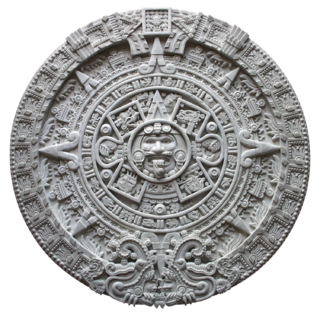
Mesoamerican chronology divides the history of prehispanic Mesoamerica into several periods: the Paleo-Indian, the Archaic, the Preclassic or Formative, the Classic (250–900CE), and the Postclassic, Colonial (1521–1821), and Postcolonial (1821–present). The periodization of Mesoamerica is based on archaeological, ethnohistorical, and modern cultural anthropology research. The endeavor to create cultural histories of Mesoamerica dates to the early twentieth century, with ongoing work by archeologists, ethnohistorians, historians, and cultural anthropologists.

The Mesoamerican Long Count calendar is a non-repeating, vigesimal (base-20) and base-18 calendar used by several pre-Columbian Mesoamerican cultures, most notably the Maya. For this reason, it is often known as the MayaLong Count calendar. Using a modified vigesimal tally, the Long Count calendar identifies a day by counting the number of days passed since a mythical creation date that corresponds to August 11, 3114 BCE in the Proleptic Gregorian calendar. The Long Count calendar was widely used on monuments.
The proleptic Gregorian calendar is produced by extending the Gregorian calendar backward to dates preceding its official introduction in 1582. In countries that adopted the Gregorian calendar later, dates occurring in the interim are sometimes "Gregorianized" as well. For example, George Washington was born on February 11, 1731, as Great Britain and its possessions were using the Julian calendar with English years starting on March 25 until September 1752. After the switch, that day became February 22, 1732, which is the date commonly given as Washington's birthday.
